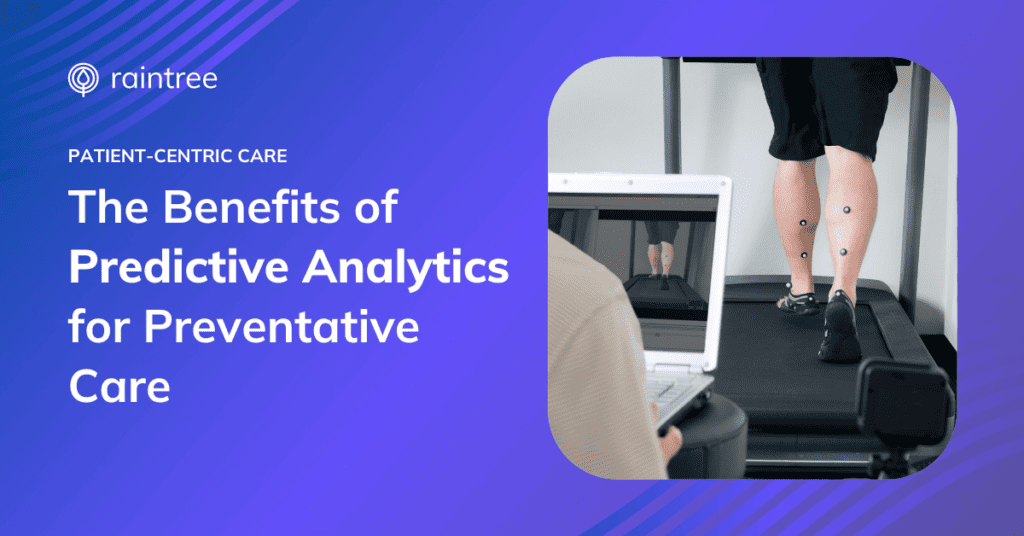Simply put, predictive analytics uses collected data to predict future events with complex algorithms and machine learning. In the context of managing a therapy and rehab practice, that can mean anything from predicting projected revenue to tracking patient trends.
How Do Predictive Analytics Benefit Therapy Practices?
Without the power of predictive technology, healthcare providers wouldn’t be able to adequately inform the public about health risks for serious conditions. However, with the big data that COVID-19 has provided since 2020, our knowledge of machine learning models has advanced considerably, as well as our ability to recognize potential outbreaks.
On the other hand, the benefits of predictive analytics can also be extremely impactful for in private therapy practices or outpatient facilities. In fact, therapists that utilize business intelligence tools can leverage data-driven diagnoses, improve patient outcomes, as well as relieve some of the workload burdens on office personnel.
Diagnosing With Machine Learning
While machine learning and artificial intelligence (AI) have changed the face of medicine, predictive analytics technology has a long way to go before it’s easily accessible for all. Although, the achievements that have been made so far do point to a bright future.
A prime example of AI paving the way for healthcare is a study conducted by the Massachusetts Institute of Technology in 2018, where researchers created an algorithm that was able to analyze and detect variance between MRI scans. With its machine learning capabilities, the AI was able to identify differences in scans more than one thousand times faster than a medical professional, significantly aiding diagnosis efforts.
But machine learning and AI can be so much more than comparing 3D images. Further social research shows that health risks can be calculated far more accurately when using algorithms that consider a patient’s socioeconomic and environmental factors into the equation.
Improving Patient Outcomes
Patient outcomes have always been a notoriously difficult form of feedback to measure, making them an equally difficult measure to improve. With NPS scores and other surveys, business intelligence tools can chart patient feedback as data points, recognize patterns that aren’t easily seen by the human eye, as well as identify areas of improvement – making patient outcomes a much easier subject to broach.
Beyond the algorithms used to track patient behaviors and trends, AI is also capable of discerning genetic markers, health risks, and warning signs for serious medical conditions. A current, real-life example of this can be found in a recent study posted on JAMA, where researchers utilizing machine learning algorithms and predictive analytics were able to accurately predict which patients were at higher risk for severe reactions to COVID-19 based on demographic characteristics and comorbidities.
So without question, it’s clear that COVID-19 has impacted healthcare data analytics in a significant way. With enormous amounts of data from every demographic across the world, there’s more information to analyze than ever before, allowing for the quick development of advancing analytic techniques.
As for therapy and rehab practices, therapists that take advantage of predictive technology can offer at-risk patients the resources and information they need for early intervention as well as recommend treatment options that cater to any unique outlier or challenge. Thus by enabling specialized care before health issues even occur, predictive analytics can play a massive role in boosting more positive patient outcomes.
Streamlining Clinical Documentation
Another study by JAMA shows that providers dedicate as much as 62% of their time per patient simply reviewing electronic health records (EHRs). With the help of AI systems, EHRs can be organized in a way that enables providers to access patient health information (PHI) faster, so that they can reduce the time spent taking daily notes and focus more on preparing for their next patient.
However, artificial intelligence doesn’t stop there! As proven by Michigan State University, business intelligence tools can go way beyond organizing patient data. In fact, researchers at MSU are developing an app that utilizes predictive analytics to identify early signs of Alzheimer’s disease, significantly lessening the time spent seeking a diagnosis and more importantly, getting patients the occupational therapy they need.
Predictive Analytics And Preventative Care
At the end of the day, the most applicable way to use predictive analytics in healthcare is to foresee and prevent outbreaks, injury, and other health conditions. Proven time and time again, recognizing risk factors early on is one of the most effective ways to improve a patient’s quality of life.
But predictive analytics can’t do it alone – from exercise and proper nutrition to good sleep hygiene and regular check-ups, early intervention and preventative care is key to ensuring a healthy community.
Raintree’s Powerful Business Intelligence Tools
So how can your therapy and rehab practice take advantage of predictive analytics technology? Well, Raintree’s scalable business intelligence tools are designed for therapists looking to optimize their operations as well as offer their patients improved quality of care.
With powerful machine learning technology that can help your therapy practice identify areas of opportunity, our BI platform features built-in staff KPIs, automated billing processes, customizable clinical documentation, as well as easy-to-use dashboards that give you complete views into patient visit trends and more!
Plus, by allowing therapists to categorize patients based on diagnosis and received treatment, Raintree’s interactive reporting can help develop estimated timelines, anticipate expected discomfort levels, as well as predict other relevant patient information.
And that’s not all – with Raintree’s all-in-one EMR, your therapy practice can benefit from integrated RCM and billing, powerful patient engagement, and flexible clinical documentation tools that are fueled by data-driven automation.
So if you want a complete 360॰ view into your business, check out our website for more information and schedule a free discovery call today!

